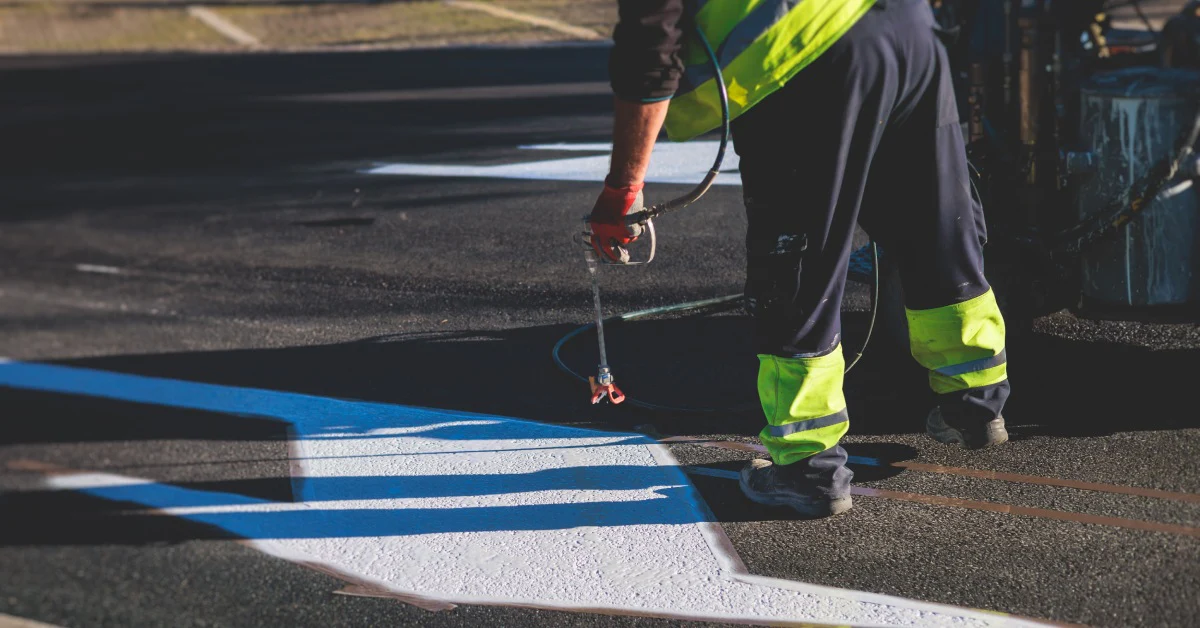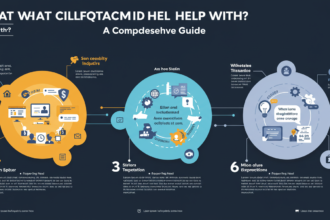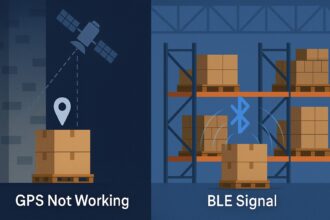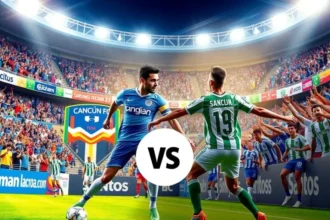Striping services are critical in organizing traffic, maximizing safety, and maintaining compliance across a wide range of environments—from busy parking lots to expansive industrial facilities. Whether it’s a freshly paved commercial lot or a warehouse interior, properly applied lines and symbols are essential for guiding both vehicles and pedestrians.
A professional striping company specializes in more than just painting lines. These experts understand material selection, surface conditions, regulations, design efficiency, and long-term durability. In many ways, they function as partners in property safety, helping clients create orderly and hazard-free environments.
This article explores what a striping company does, where striping is most commonly used, the types of materials and methods involved, and why hiring professionals makes a significant difference.
What Does a Striping Company Do?
A striping company focuses on applying pavement and floor markings that help organize spaces for safety, flow, and compliance. These markings might include directional arrows, parking stalls, crosswalks, lane dividers, loading zones, safety boundaries, and ADA-compliant signage.
Beyond simply applying paint, a reputable provider will:
- Assess site needs and layout
- Recommend suitable materials based on traffic and weather
- Ensure compliance with local and national regulations
- Provide custom stenciling when needed
- Use professional equipment for precision and durability
- Offer maintenance or re-striping services over time
In short, these companies combine technical knowledge, compliance awareness, and craftsmanship to produce results that function well and look professional.
Key Applications of Striping Services
Striping services are used in a wide range of settings to ensure order and enhance safety. Some of the most common environments include:
1. Parking Lots
The layout of a parking lot impacts vehicle flow, accessibility, and capacity. Clear markings prevent confusion, illegal parking, and accidents. A professional striping company ensures that all dimensions, turning radii, and ADA standards are correctly implemented.
2. Warehouses and Distribution Centers
Inside large industrial spaces, floor markings guide foot traffic, forklift routes, hazard zones, and storage lanes. They help maintain OSHA safety standards and keep operations efficient.
3. Commercial Driveways and Access Roads
Directional arrows, lane dividers, and stop bars control the movement of vehicles entering and exiting a property. These markings help reduce the risk of accidents, especially in high-traffic areas.
4. Schools, Campuses, and Recreational Facilities
Crosswalks, sports courts, no-parking zones, and fire lanes all require clear striping. In these spaces, visibility and durability are critical for safety.
5. Airports and Transport Hubs
Ground markings at airports are essential for guiding vehicular traffic, service routes, and restricted areas. Accuracy and compliance with strict regulations are vital in these environments.
6. Municipal and Public Infrastructure
Bike lanes, pedestrian crossings, and road markings installed by a licensed striping company help maintain the order and safety of public spaces.
Common Types of Striping Materials
The choice of material affects how long the striping lasts, how well it performs in various weather conditions, and how visible it is during day and night. The most commonly used materials include:
A. Water-Based Paint
- Ideal for low-traffic areas
- Cost-effective
- Quick-drying
- Environmentally friendly
- Best for indoor applications or temporary markings
B. Solvent-Based Paint
- Better adhesion and durability
- Performs well in humid or cold environments
- Longer drying time than water-based
- Suitable for outdoor applications
C. Thermoplastic
- Applied hot and fused to the surface
- Extremely durable
- Reflective when mixed with glass beads
- Ideal for highways, intersections, and high-traffic roads
D. Preformed Tape
- Adhesive-backed and easy to apply
- Common in temporary zones or areas needing sharp detail
- Easily removed or repositioned
- Limited durability under heavy traffic
E. Epoxy and MMA (Methyl Methacrylate)
- Industrial-grade materials with superior adhesion
- Long lifespan even in high-use areas
- More expensive but cost-effective over time
- Excellent for factories, loading docks, and parking structures
The correct material depends on surface type (asphalt or concrete), expected traffic, weather exposure, and project goals.
The Striping Process: How It Works
A reputable striping company follows a defined process that ensures quality, consistency, and compliance:
1. Initial Assessment
The company begins with a site visit or blueprint review to understand surface conditions, layout goals, and regulatory needs.
2. Layout Design
Precise measurements are taken to design the layout, including parking stalls, walkways, traffic lanes, and ADA-accessible areas.
3. Surface Preparation
The area is cleaned of dirt, oil, and debris to ensure proper paint adhesion. If re-striping, old markings may be removed or covered.
4. Application
Using professional equipment like airless stripers or thermoplastic applicators, the team applies markings with high accuracy.
5. Curing and Drying
Depending on material choice, drying may take anywhere from 15 minutes to several hours. The area remains closed to traffic during this time.
6. Final Inspection
After drying, the striping is inspected for alignment, thickness, visibility, and compliance.
Why Hire a Professional Striping Company?
While striping might appear simple, DIY or low-cost alternatives often lead to uneven lines, poor adhesion, or non-compliant layouts. There are several reasons to trust professionals:
• Precision
A professional striping company uses laser guides, high-pressure machines, and experienced technicians to deliver sharp, even lines every time.
• Regulation Knowledge
ADA requirements, OSHA standards, fire lane dimensions, and local ordinances all impact layout decisions. Professionals are trained to ensure compliance.
• Durability
Contractors choose materials based on use and environment, ensuring your markings last longer and maintain visibility.
• Aesthetic Value
Neatly applied, well-aligned striping enhances curb appeal and creates a positive impression for visitors and clients.
• Time Efficiency
Professionals complete the job quickly and effectively, minimizing disruption to your facility or operations.
Maintenance and Re-Striping
Even the best applications will fade over time due to traffic, UV exposure, and weather. Re-striping should be part of a regular property maintenance schedule.
Signs it’s time to re-stripe:
- Lines are visibly faded or chipped
- ADA symbols or stencils are no longer readable
- Parking layouts have changed
- Surface sealing or paving has been done
- Traffic patterns have shifted
Many property managers set annual or biennial re-striping plans to maintain visibility and compliance.
Factors That Affect Striping Cost
The price of hiring a striping company varies depending on several factors:
- Size of the project (number of parking spaces, square footage)
- Material type (paint vs. thermoplastic vs. epoxy)
- Complexity (custom stencils, symbols, directional arrows)
- Surface condition (new vs. previously striped, clean vs. dirty)
- Accessibility (active sites, tight timelines, night work)
Always request a detailed quote and confirm what’s included—materials, labor, equipment, layout, and traffic control if needed.
Customization Options
Many striping providers offer custom stencil creation and logo application. These services allow businesses to include branding, numbering systems, or facility-specific icons.
Examples of customization include:
- Company logos in parking lots
- Numbered warehouse aisles
- Color-coded zones for safety or logistics
- Branded pickup or delivery zones
- Unique wayfinding graphics
A good striping company will provide options for personalization without compromising clarity or compliance.
Common Mistakes to Avoid
Even experienced managers can run into issues when planning a striping job. Here are key mistakes to avoid:
- Underestimating layout complexity
- Using the wrong materials for the surface
- Applying markings in poor weather
- Skipping surface preparation
- Neglecting to check regulations
Hiring an experienced contractor reduces these risks and delivers a long-lasting, functional result.
Final Thoughts
Striping may be one of the final touches on a construction or renovation project, but it should never be an afterthought. Partnering with a professional striping company ensures that your pavement markings are safe, compliant, and built to last.
Whether you’re working on a parking lot, warehouse, roadway, or commercial property, proper striping elevates the functionality and appearance of your space. It directs traffic, enhances safety, and supports a positive user experience—making it an essential investment for any property owner or manager.

















